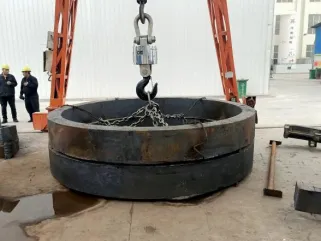- Afrikaans
- Albanian
- Amharic
- Arabic
- Armenian
- Azerbaijani
- Basque
- Bengali
- China
- China (Taiwan)
- Czech
- Danish
- Dutch
- English
- French
- German
- Greek
- Gujarati
- Haitian Creole
- hausa
- Miao
- Hungarian
- igbo
- Indonesian
- Italian
- Japanese
- Javanese
- Rwandese
- Korean
- Kyrgyz
- Lao
- Lithuanian
- Luxembourgish
- Macedonian
- Malgashi
- Malay
- Mongolian
- Myanmar
- Nepali
- Norwegian
- Persian
- Polish
- Portuguese
- Punjabi
- Russian
- Spanish
- Swahili
- Swedish
- Telugu
- Vietnamese
Feb . 08, 2025 04:58 Back to list
pump shaft


In recent years, technological advancements have led to the development of smart pump shafts. These are equipped with sensors capable of monitoring various parameters such as temperature, load, and vibration in real time. Such data can be invaluable in predictive maintenance, allowing operators to preempt issues before they cause downtime. Furthermore, the integration of IoT (Internet of Things) in industrial systems means these smart shafts can be part of a larger network, providing insights and analytics to improve overall system efficiency. Installation of pump shafts demands expertise and precision. Proper alignment is crucial to avoid undue stress on the shaft and bearings. Misalignment can lead to increased energy consumption and cause damage over time. As such, it’s important for installation to be carried out by skilled professionals following OEM guidelines and industry best practices. This will ensure that the pump system operates efficiently from the outset. The market for pump shafts is becoming increasingly competitive, with manufacturers continually seeking new ways to improve efficiency and reduce costs. This has led to innovations such as the use of composite shafts, which are lighter and more corrosion-resistant than their metal counterparts. Additionally, manufacturers are exploring additive manufacturing techniques, which could revolutionize the way pump shafts are produced by allowing for more complex geometries and rapid prototyping. In conclusion, pump shafts, while seemingly simple components, are vital to the performance and reliability of pumping systems. Their importance calls for careful consideration in material selection, manufacturing precision, balancing, and maintenance practices. As technology continues to evolve, the future of pump shafts looks set to incorporate even greater levels of intelligence and integration, providing enhanced value and performance in diverse applications. Whether in a factory floor, a water treatment plant, or an offshore oil rig, pump shafts will remain a cornerstone of operational success, underscoring the need for expertise and authority in their design and application.
-
Low-Cost Borehole Drilling Machine for Small-Scale Projects
NewsJul.11,2025
-
Carbide Bullet Teeth for Abrasive Formations: Powering Industrial Drilling Efficiency
NewsJul.11,2025
-
Advantages of Down-the-Hole Drill Bits in Geothermal Projects
NewsJul.11,2025
-
Hole Hammer Use in Water Well Drilling
NewsJul.11,2025
-
Benefits of a Mobile Diesel Compressor in Construction
NewsJul.11,2025
-
Benefits of Diesel Portable Screw Air Compressors
NewsJul.11,2025
















